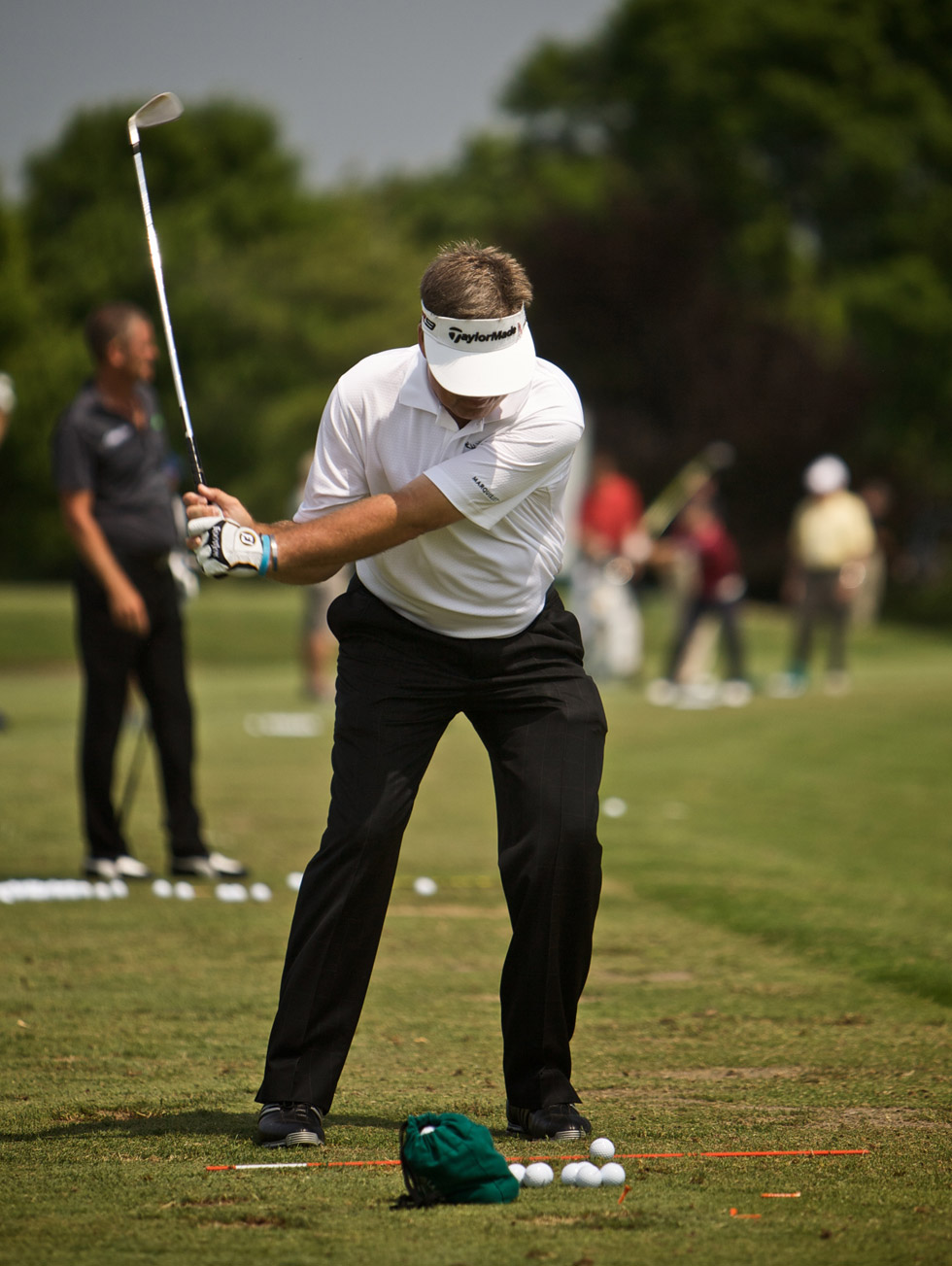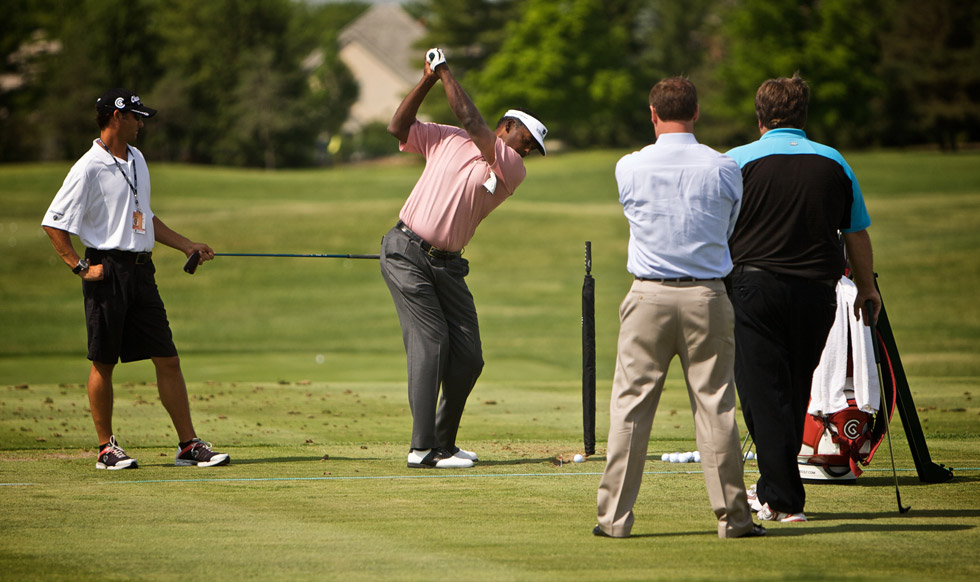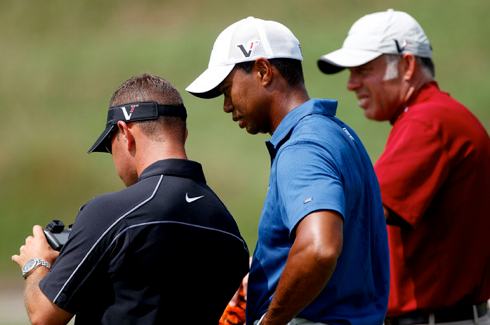 A little over a month ago, I gave you Five Ways to Play Golf Over The Winter, and one of the options was to go to the driving range. While going to the range is great practice, if you simply hit golf ball after golf ball without a plan for improvement, you won’t be able to make the most of your practice. When I hit the range, I see too many people take a very inefficient approach to hitting golf balls, and this doesn’t allow them to improve quickly. By following these steps, you will find yourself getting better, faster, and more able to go from the driving range to the course.
A little over a month ago, I gave you Five Ways to Play Golf Over The Winter, and one of the options was to go to the driving range. While going to the range is great practice, if you simply hit golf ball after golf ball without a plan for improvement, you won’t be able to make the most of your practice. When I hit the range, I see too many people take a very inefficient approach to hitting golf balls, and this doesn’t allow them to improve quickly. By following these steps, you will find yourself getting better, faster, and more able to go from the driving range to the course.
Number Five: Pick Targets
One of the easiest ways to get a little extra out of your time at the driving range is pick targets and aim at them. Like in real golf, you want to train yourself to hit at targets, not just wherever the mat is facing. One good way to make sure you are aiming at targets is to bring along a driveway stake or two. Just aim it at the target and adjust your feet appropriately.

One thing to keep in mind is that the marked yardages on the flags aren’t always that accurate, and when they move the tees up and back the actual yardages can change quite a bit. If you have a laser rangefinder, bring it to the range and map out the flags that you intend to hit at. If you, like me, don’t own a laser, Google Earth can be your friend. Just zoom into to the driving range you plan on going to, and use the ruler function get the yardages from the front and back of the teeing area. That way, when they move the tees you can simply estimate how far away the flags are. While it isn’t a prefect method, it’s a great way to get a pretty accurate guess and it’s a lot better than relying on the marked yardages.
Number Four: Mix Up Your Clubs
When you play a golf course, you start most holes with a wood, then an iron, and if you are playing a par-five, you finish with a wedge. Of course there is variation, but that’s the general order. Unfortunately, on the range I see many people picking one club (usually the driver) and using it for the entire bucket. Unless you are working on swing changes and want to stick with one club, it’s best to spend some time practicing the way you play, by mixing drivers, irons, and wedges in with each other.
Ideally, you want to start off by warming up, and hitting some wedges is great for that. While some brands are heavier than others, wedges usually have higher swing-weights than irons, so you can use that to stretch out your muscles. The best way would be to hit a few balls with your wedges, move to your short irons, hit a few long irons, and finish with some drivers. This gets you warmed up with all of your clubs, and ideally this will leave you with about half the bucket left (or more, depending on how many balls you buy). You should use the the rest of the golf balls to mix up your clubs. This will prevent you from getting in a rut, where you end up hitting ball after ball with the same club. By mixing it up, you get a more realistic practice, and a more effective practice.
Number Three: Take Your Time
I mentioned before how I often see people hitting driver after driver, searching for answers in the dirt. Well, these are the people who also tend to not take their time. While you are only given a set amount of golf balls, the driving range staff does not usually put a time limit on you practice. Whether or not you are working one something, hitting golf ball after golf ball usually isn’t the answer, especially on hot days where you could get tired. If you are having trouble performing a certain move, make a few practice swings, figure out a swing thought that gets you in the correct positions (more on that later), and try doing things in slow motion. Figure out what a correct swing position should feel like, so you don’t have to waste balls developing that sense. By not rushing yourself, you are giving your body time to recover physically and you are giving your mind more time to focus on every shot, which will help you get the most out of every golf ball.
Number Two: Have Something to Work On
Whether you are making a small fix like trying to shorten your swing, or you are undertaking an entire swing overhaul, having something to work on is always a good thing. Having a goal means that you always have something to work towards, and when you have a goal, you tend to be more focused. Usually this leads to more success.

If you have recently had a lesson with a PGA pro, you surely have plenty of things to work on. A pro will usually give you feelings to keep throughout your swing, swing thoughts, or drills to do. These all give you ways to improve, and they allow you to measure your improvements later on. Having things like this are crucial to successful practice, because simply hitting golf balls will not get you anywhere. The old adage that “practice makes perfect” is far from true, while the phrases “practice makes permanent” and “perfect practice makes perfect” are much closer to reality. If you don’t know what you are doing, and you don’t have a plan to get better, then you don’t really have much or a chance at improving. Repeating the same imperfect move over and over will not let you progress. You would be following the old saying, rather than learning from your mistakes and adjusting thusly. By always having a game plan to improve, you give yourself a leg up, and you afford yourself a more efficient practice.
Number One: Bring a Camera
First, read this article by Erik on why and how to film your swing. Next, follow the instructions, and without a doubt it will be the best couple of hundred bucks you will ever spend on golf (well, maybe second only to actual lessons with a quality instructor). When you have a camera, you don’t have to rely on (smoke and) mirrors, or your buddy standing behind you, or your own vestibular senses, because what you feel probably isn’t what is actually happening. When you swing a driver, the club head is moving close to (or more than) 100 miles per hour, and there is no way you can possibly feel what is happening at the moment of truth: impact. Most people cannot even accurately feel what they are doing in the backswing.

One thing that a camera will help you do is keep a timeline of sorts that shows your progression and improvements over time. This way, you will be able to see how you have advanced, and where you can still improve. If you take a lesson and the instructor tells you to make sure you keep your arms in a certain spot at the top of the backswing, having a camera will give you almost-instant feedback as to where your arms really were, and that’s how you achieve a truly more effective practice. Rather than guessing as to whether or not you have successfully made a swing change, having a camera will let you know when you have done it. This way, if you really nail a change right away, you don’t spend the next hour working on the same thing. To the same token, if the video shows that you have yet to successfully complete the move, you should take the extra time to get it right, rather than moving on and failing to properly engrain the specific swing change. If you do move on prematurely, you run the risk of reverting to old habits, which will curtain your progress even more and take up unneeded time and golf balls.
Closing and Your Thoughts?
Next time you are at the range and you want to get a little more for your money, try these tips. Not only will they improve your game instantly, but they will give you a long term-plan for success. They aren’t hard or time-consuming changes, but they truly make a big difference. If you are looking for a quick fix, try picking targets, mixing up your clubs, and taking your time, while if you are looking for a consistent way to get the most out of every trip to the driving range, make sure to bring a camera and always have something to work on. Incorporate these into your practice and you won’t be disappointed.
Photo Credits: © Erik J. Barzeski/The Sand Trap .com, © Chris Graythen/Getty.

Great article! I am aware, and try to incorporate, most of what you said into my practice sessions. However, mixing up your clubs is something I’ve never done. I usually go through the entire practice session just like your warm-up session that you described. I start with the wedges, hit 5-10, and work my way up through my bag. Sometimes hitting every club, sometimes just the 60*, 9i, 7i, 5i, etc. But warming up that way and then mixing it up through the rest of the bag is something I will definitely try on my next range outing!
Glad you liked the article. I think what really is great about mixing up clubs is that it more closely emulates what you do in a round, so it could help people who don’t take their game from the range to the course very well. Plus, it’s just less monotonous.